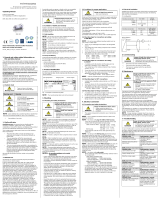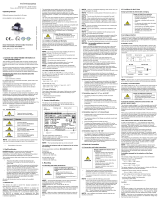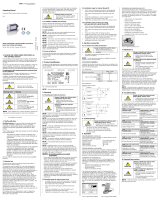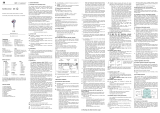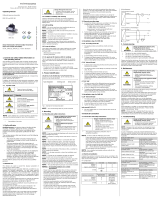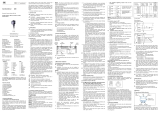BD|SENSORS DMP 334 Operating instructions
- Type
- Operating instructions

BD-Sensors-Str.1; 95199 Thierstein, Germany
Phone: +49 (0) 92 35 98 11 0 | www.bdsensors.de
© 2023 BD|SENSORS GmbH - All rights reserved.
Operating Manual
Pressure transmitters / screw-in transmitters for IS-areas
DX14-DMK 351, DX14-DMK 351 P, DX14-LMK 351,
DX14B-DMK 387,
DX19-DMK 331, DX19-DMK 331 P, DX19-DMP 311,
DX19-DMP 321, DX19-DMP 331, DX19-DMP 331 i,
DX19-DMP 331 P, DX19-DMP 331 Pi, DX19-DMP 333,
DX19-DMP 333 i, DX19-DMP 334, DX19-DMP 335,
DX19-DMP 336, DX19-DMP 339, DX19-DMP 343,
DX19-LMK 331, DX19-LMP 331, DX19-LMP 331i,
DX19-17.600G, DX19-17.605G, DX19-26.600G
READ THOROUGHLY BEFORE USING THE DEVICE
KEEP FOR FUTURE REFERENCE
ID: BA_DMU-ES_EX_E | Version: 04.2023.0
1. General and safety-related information on
this operating manual
This operating manual enables safe and proper handling of the
product, and forms part of the device. It should be kept in close
proximity to the place of use, accessible for staff members at
any time.
All persons entrusted with the mounting, installation, putting into
service, operation, maintenance, removal from service, and
disposal of the device must have read and understood the
operating manual and in particular the safety-related information.
The following documents are an important part of the
operating manual:
- data sheet - type-examination certificate
For specific data on the individual device, please refer to the
respective data sheet.
Download these by accessing www.bdsensors.de or request
them: [email protected] | phone.: +49 (0) 92 35 / 98 11 0
The IS versions of our products are variants of the standard
products.
Example:
Standard: DMK 351 IS version: DX14-DMK 351
In addition, the applicable accident prevention regulations,
safety requirements, and country-specific installation standards
as well as the accepted engineering standards must be
observed.
For the installation, maintenance and cleaning of the device, the
relevant regulations and provisions on explosion protection
(VDE 0160, VDE 0165 and/or EN 60079-14) as well as the
accident prevention regulations must absolutely be observed.
The device was designed by applying the following standards:
DX14: EN IEC 60079-0:2018; EN 60079-11:2012
DX14B: EN 60079-0:2018; EN 60079-11:2012;
IECEx IBE 18.0019X: IEC 60079-0: 2017 Edition 7;
IEC 60079-11: 2011 Edition 6
DX19: EN IEC 60079-0:2018; EN 60079-11:2012;
IECEx IBE 12.0027X: IEC 60079-0: 2011 Edition 6;
IEC 60079-11: 2011 Edition 6
1.1 Symbols used
Warning word
-Type and source of danger
-Measures to avoid the danger
Warning word
Meaning
DANGER
-Imminent danger!
-Non-compliance will result in
death or serious injury.
WARNING
-Possible danger!
-Non-compliance may result in
death or serious injury.
CAUTION
-Hazardous situation!
-Non-compliance may result in
minor or moderate injury.
NOTE
-
draws attention to a possibly hazardous situation that
may result in property damage in case of non
-compliance.
Precondition of an action
1.2 Staff qualification
Qualified persons are persons that are familiar with the
mounting, installation, putting into service, operation,
maintenance, removal from service, and disposal of the product
and have the appropriate qualification for their activity.
This includes persons that meet at least one of the following
three requirements:
- They know the safety concepts of metrology and
automation technology and are familiar therewith as
project staff.
- They are operating staff of the measuring and
automation systems and have been instructed in the
handling of the systems. They are familiar with the
operation of the devices and technologies described in
this documentation.
- They are commissioning specialists or are employed in
the service department and have completed training that
qualifies them for the repair of the system. In addition,
they are authorized to put into operation, to ground, and
to mark circuits and devices according to the safety
engineering standards.
All work with this product must be carried out by qualified
persons!
1.3 Intended use
The device is intended for converting the physical parameter of
pressure into an electric signal. It has to be used only for this
purpose, considering the following information.
The above listed pressure transmitters have, according to the
type, been developed for applications in overpressure and
vacuum as well as for absolute pressure measurement.
The screw-in transmitters are intended for level and process
measurement.
Devices with 3-A and / or EHEDG certified process connection
have been developed especially for applications in food and
pharmaceutical industry. The process connection is hygienic and
can be sterilized.
Permissible measuring and cleaning media are gases or liquids,
which are compatible with the media wetted parts of the device
(according to data sheet) and your system. This must be
ensured for the application.
This operating manual applies to devices with explosion
protection approval and is intended for the use in IS-areas.
A device has an explosion-protection approval if this was
specified in the purchase order and confirmed in our order
acknowledgement. In addition, the manufacturing label includes
a sign.
The user must check whether the device is suited for the
selected use. In case of doubt, please contact our sales
department: info@bdsensors.de | phone: +49 (0) 92 35 98 11 0
BD|SENSORS assumes no liability for any wrong selection and
the consequences thereof!
The technical data listed in the current data sheet are engaging
and must absolutely be complied with. If the data sheet is not
available, please order or download it from our homepage:
http://www.bdsensors.de
1.4 Incorrect use
WARNING
Danger through incorrect use
- Only use the device in permissible
media and in accordance with its
intended use.
-Do not use the device as a ladder or
climbing aid.
-The device must not be altered or
modified in any way.
- BD|SENSORS is not liable for damage
caused by improper or incorrect use.
1.5 Limitation of liability and warranty
Failure to observe the instructions or technical regulations,
improper use and use not as intended, and alteration of or
damage to the device will result in the forfeiture of warranty
and liability claims.
1.6 Safe handling
NOTE - Do not use any force when installing the device to
prevent damage of the device and the plant!
NOTE - Treat the device with care both in the packed and
unpacked condition!
NOTE - Do not throw or drop the device!
NOTE - Excessive dust accumulation and complete coverage
with dust must be prevented!
NOTE - The device is state-of-the-art and is operationally
reliable. Residual hazards may originate from the device if it is
used or operated improperly.
1.7 Safety-related maximum values
DX14- …:
Ui = 28 V, Ii = 93 mA, Pi = 660 mW, Ci = 14 nF, Li ≈ 0 µH;
Cgnd = 27 nF; plus cable inductivities 1.5 µH/m and
cable capacities 220 pF/m (for cable by factory)
application in zone 0 (patm 0.8 bar up to 1.1 bar): -20 ... 60 °C
application in zone 1 and higher: -25 ... 70 °C
devices with temperature class T6: -25 … 60°C
DX14B-DMK 387:
Ui = 28 V, Ii = 93 mA, Pi = 660 mW, Ci = 14 nF, Li ≈ 0 µH,
Cgnd = 27 nF; plus cable inductivities 1 µH/m and
cable capacities 160 pF/m (for cable by factory)
application in zone 0 (patm 0.8 bar up to 1.1 bar): -20 ... 60 °C
application in zone 1 and higher:: -25 ... 65 °C
DX19-…:
Ui = 28 V; Ii = 93 mA; Pi = 660 mW; Ci ≈ 0 nF; Li ≈ 0 µH;
Cgnd = 27 nF;; plus cable inductivities 1 µH/m and
cable capacities 160 pF/m (for cable by factory)
application in zone 0 (patm 0.8 bar up to 1.1 bar): -20 ... 60 °C
application in zone 1 and higher: -40/-20 ... 70 °C
application in zone 1 and higher for type DX19- *** i:
-40/-20 ... 65 °C
1.8 Scope of delivery
Check that all parts listed in the scope of delivery are included
free of damage, and have been delivered according to your
purchase order:
-pressure transmitter or screw-in transmitter
-for mechanical pressure ports DIN 3852:
O-ring (pre-mounted)
-this operating manual
- for SIL2 version: safety data sheet
1.9 UL approval (for devices with UL marking)
The UL approval was effected by applying the US standards,
which also conform to the applicable Canadian standards on
safety.
Observe the following points so that the device meets the
requirements of the UL approval:
-only indoor usage
-maximum operating voltage: according to data sheet
-The device must be operated via a supply with energy
limitation (acc. to UL 61010) or an NEC Class 2 energy
supply.
2. Product identification
The device can be identified by means of the manufacturing
label with order code. The most important data can be gathered
therefrom.
Fig. 1: Example of manufacturing label
NOTE - The manufacturing label must not be removed!
The marking for devices with explosion-protection approval has
to include following information:
DX14-…:
EU-type examination certificate IBExU05ATEX1070 X
metallic pressure port: II 1G Ex ia IIC o. IIB T6 o. T4 Ga
II 1D Ex ia IIIC T110°C Da
non-metallic pressure port: II 1/2G Ex ia IIC T4 Ga/Gb
II 1/2D Ex ia IIIC T110°C Da/Db
DX14B-DMK 387:
EU-type examination certificate IBExU15ATEX1066 X
metal housing: II 1G Ex ia IIC T4 Ga
PVDF or PP housing: II 2G Ex ia IIC T4 Gb
all types: II 1D Ex ia IIIC T135 °C Da
DX19-…:
EU-type examination certificate IBExU10ATEX1068 X
non-metallic pressure port: II 2G Ex ia IIC T4 Gb
II 2D Ex ia IIIC T85°C Db
metallic pressure port: II 1G Ex ia IIC T4 Ga
II 1D Ex ia IIIC T135°C Da
3. Mounting
3.1 Mounting and safety instructions
DANGER
Danger of death from explosion,
airborne parts, leaking fluid, electric
shock
- Always mount the device in a
depressurized and de-energized
condition!
- Do not install the device while there is
a risk of explosion.
DANGER
Danger of death from explosion
- Explosion hazard due to high-charging
processes in connection with free-
hanging submersible transmitters with
cable FEP
- Fixed installation of the FEP cable!
NOTE - The technical data listed in the EU-type examination
certificate are binding. Download this by accessing
www.bdsensors.de or request it by e-mail or phone:
NOTE - Make sure that the entire interconnection of
intrinsically safe components remains intrinsically safe. The
owner-operator is responsible for the intrinsic safety of the
overall system (entire circuitry).
NOTE - If there is increased risk of damage to the device by
lightning strike or overvoltage, increased lightning protection
must additionally be provided!
NOTE - Treat any unprotected diaphragm with utmost care;
this can be damaged very easily.
NOTE - Provide a cooling line when using the device in steam
piping and clarify the material compatibility.
NOTE - The measuring point must be designed in such a way
that cavitation and pressure surges are avoided.
NOTE - When installing the device, avoid high mechanical
stresses on the pressure port! This will result in a shift of the
characteristic curve or to damage, in particular in case of very
small pressure ranges and devices with a pressure port made of
plastic.
NOTE - In hydraulic systems, position the device in such a
way that the pressure port points upward (ventilation).
NOTE - If the device is installed with the pressure port pointing
upwards, ensure that no liquid drains off on the device. This
could result in humidity and dirt blocking the gauge reference in
the housing and could lead to malfunctions. If necessary, dust
and dirt must be removed from the edge of the screwed joint of
the electrical connection.
NOTE - Do not remove the packaging or protective caps of the
device until shortly before the mounting procedure, in order to
exclude any damage to the diaphragm and the threads!
Protective caps must be kept! Dispose of the packaging
properly!
NOTE - The permissible tightening torque depends on the
conditions on site (material and geometry of the mounting point).
The specified tightening torques for the pressure transmitter
must not be exceeded!
NOTES - for mounting outdoors or in a moist
environment:
-Please note that your application does not show a dew point,
which causes condensation and can damage the pressure
transmitter. There are specially protected pressure
transmitters for these operating conditions. Please contact us
in such case.
- Connect the device electrically straightaway after mounting or
prevent moisture penetration, e.g. by a suitable protective
cap. (The ingress protection specified in the data sheet
applies to the connected device.)
-Select the mounting position such that splashed and
condensed water can drain off. Stationary liquid on sealing
surfaces must be excluded!
-If the device has a cable outlet, the outgoing cable must be
routed downwards. If the cable needs to be routed upwards,
this must be done in an initially downward curve.
- Mount the device such that it is protected from direct solar
radiation. In the most unfavourable case, direct solar radiation
leads to the exceeding of the permissible operating
temperature. This must be excluded if the device is used in
any explosion-hazardous area!
-For devices with gauge reference in the housing (small hole
next to the electrical connection), install the device in such a
way, that the gauge reference is protected from dirt and
moisture. Should the device be exposed to fluid admission,
the functionality will be blocked by the gauge reference. An
exact measurement in this condition is not possible.
Furthermore, this can lead to damages on the device.
3.2 Conditions for devices with 3-A symbol
The device or its connecting piece must be installed in such a
way that the surfaces are self-draining (permissible installation
position 273° … 87°).
Make sure that the welding socket is mounted flush inside the
tank.
The user is responsible for:
-the correct size of the seal and the choice of an
elastomeric sealing material that complies with the
3-A standard
- an easy to clean installation position of the pressure
transmitter with little dead space, as well as definition /
verification / validation of a suitable cleaning process
-defining adequate service intervals
3.3 Conditions for devices, with EHEDG certificate
Install the device according to the requirements given in EHEDG
Guidelines 8, 10 and 37. That is to mount the device in a self-
draining orientation. The device should be installed flush to the
process area. If mounting in a T-piece, the ratio between the
depth of the upstand (L) and the diameter (D) of the upstand
shall be L/D<1. If welded adapters are used, the food contact
surface must be smooth, and the welding has to be done
according to EHEDG Guideline 9 and 35. Suitable pipe
couplings and process connections must be applied according to
the EHEDG Position Paper. (List the available ones.)
3.4 Conditions for oxygen applications
DANGER
Danger of death from explosion
- when used improperly
Make sure that your device was ordered for oxygen applications
and delivered accordingly. (see manufacturing label - ordering
code ends with the numbers "007")
Unpack the device directly prior to the installation. Skin contact
during unpacking and installation must be avoided to prevent
fatty residues remaining on the device. Wear safety gloves!
The entire system must meet the requirements of BAM
(DIN 19247)!
For oxygen applications > 25 bar, devices without seals are
recommended.
Transmitters with o-rings of FKM (Vi 567):
permissible maximum values: 25 bar / 150° C (BAM approval)
3.5 Mounting steps for connections according
to DIN 3852
NOTE - Do not use any additional sealing material such as
yarn, hemp or Teflon tape!
The O-ring is undamaged and seated in the designated
groove.
The sealing face of the mating component has a flawless
surface. (RZ 3.2)
1 Screw the device into the corresponding thread by hand.
2 Devices equipped with a knurled ring:
only tighten by hand
3 Devices with a spanner flat must be tightened using a
suitable open-end wrench. Permissible tightening torques
for pressure transmitter:
- wrench flat made of steel:
G1/4": approx. 5 Nm G1/2": approx. 10 Nm
G3/4": approx. 15 Nm G1": approx. 20 Nm
G1 1/2": approx. 25 Nm
- wrench flat made of plastic: max. 3 Nm
3.6 Mounting steps for connections according
to EN 837
A suitable seal for the medium and the pressure to be
measured is available. (e.g. a copper seal)
The sealing face of the mating component has a flawless
surface. (RZ 6.3)
1 Screw the device into the corresponding thread by hand.
2 Then tighten it using an open-end wrench. Permissible
tightening torques for pressure transmitter:
G1/4": approx. 20 Nm; G1/2": approx. 50 Nm
NOTE - permitted pressure ranges according to EN 837
G1/4"
EN 837
p ≤ 600 bar
Counterpart has to be of
steel according to
DIN 17440 with strength
Rp0.2 ≥ 190 N/mm
2
G1/2"
EN 837
p ≤ 1000 bar
G1/4"
EN 837
p
> 600 bar,
p ≤ 1000 bar
Counterpart has to be of
steel according to
DIN 17440 with strength
Rp0.2 ≥ 260 N/mm
2
G1/2"
EN 837
p
> 1000 bar,
p ≤ 1600 bar
NOTE - Please refer to data sheet or contact sales department
at BD|SENSORS regarding max. permitted pressure of device.
3.7 Mounting steps for NPT connections
Suitable fluid-compatible sealing material, e.g. PTFE tape,
is available.
1 Screw the device into the corresponding thread by hand
2 Then tighten it using an open-end wrench. Permissible
tightening torques for pressure transmitter:
1/4" NPT: approx. 30 Nm; 1/2" NPT: approx. 70 Nm
3.8 Mounting steps for G1″ cone connection
1 Screw the device into the mating thread by hand (seal
produced metallically)
2 Then tighten it using an open-end wrench. Permissible
tightening torques for pressure transmitter:
pN < 10 bar: 30 Nm pN ≥ 10 bar: 60 Nm
3.9 Mounting steps for internal threads M20x1.5 and
9/16" UNF (for high-pressure devices)
WARNING
Danger of injury
- Due to wrong installation
- Do not use any seal!
NOTE - The high-pressure tube will seal metal-to-metal in the
chamfer of the pressure port. (sealing cone 60°)
1 Screw the high-pressure fitting into the internal thread of
the pressure transmitter.
2 Then tighten it using an open-end wrench. The required
tightening torque depends on the manufacturer's
specifications for the high-pressure pipe you are using.
(permissible tightening torque for pressure transmitter:
max 120 Nm)
3.10 Mounting steps for dairy pipe connections
The O-ring is undamaged and seated in the designated
groove.
Chapter "3.2 and/or 3.3" have been noticed.
EHEDG conformity is only ensured in combination with
an approved seal for codes M73, M75, M76. This is e.g.:
ASEPTO-STAR k-flex upgrade seal by Kieselmann GmbH
1 Centre the dairy pipe connection in the counterpart.
2 Screw the cup nut onto the mounting part.
3 Then tighten it using a hook wrench.
3.11 Mounting steps for Clamp and Varivent
connections
A suitable seal for the measured fluid and the pressure to
be measured is available.
Chapter "3.2 and/or 3.3" have been noticed.
EHEDG conformity is only ensured in combination with
an approved seal. This is e.g.:
for Clamp connections - codes C61, C62, C63:
T-ring seal from Combifit International B.V.
for Varivent connections - codes P40, P41:
EPDM-O-ring which is FDA-listed
Note, that P40 can only be used for tank flanges.
1 Place the seal onto the corresponding mounting part.
2 Centre the clamp connection or Varivent connection
above the counterpart with seal.
3 Then fit the device with a suitable fastening element (e. g.
semi-ring or retractable ring clamp) according to the
supplier’s instructions.
3.12 Mounting steps for flange connections
A suitable seal for the measured fluid and the pressure to
be measured is available. (e.g. a fiber seal)
1 Put the seal between connecting flange and counter flange
2 Install the device with 4 resp. 8 screws (depending on
flange version) on the counter flange.
4. Electrical connection
4.1 Connection and safety instructions
DANGER
Danger of death from electric shock
or explosion
-Explosion hazard if the operating
voltage is too high (max. 28 VDC) or by
opening the field housing while an
explosion hazard exists.
- Always mount the device in a
depressurized and de-energized
condition!
-
Do not install the device while there is a
risk of explosion.
-Operate the device only within the
specification! (data sheet)
The limit values listed in the EU-type examination certificate
are observed. (Capacity and inductance of the connection
cable are not included in the values.)
The supply corresponds to protection class III (protective
insulation).
NOTE - If the device is equipped with plug ISO 4400 or field
housing, it must be ensured that the external diameter of the
used cable is within the permissible clamping range:
cable socket ISO 4400: Ø 4 … 6 mm
field housing code 850: Ø 2 … 8 mm
field housing code 880: Ø 5 … 14 mm
Moreover you have to ensure that it lies in the cable gland firmly
and cleftlessly!
NOTE - When devices with ISO 4400 or Buccaneer
connector are used, the cable socket must be properly
mounted so that the ingress protection specified in the data
sheet is ensured! Ensure that the delivered seal is placed
between plug and cable socket. After connecting the cable,
fasten the cable socket on the device by using the screw.
0637
DMP 331P/ DMP 331Pi:
74-07
EU-type examination Safety technical
certificate no., explosion marking maximum values
Type designation Ordering code Serial number

Supply +
Supply -
V
S
A
p
I
NOTE - On devices with field housing, the terminal clamps
are situated under the metal cap. To install the device
electrically, the cap must be screwed off. The connection must
be made such that the isolation distances according to standard
are observed and that loosening of the connecting lines is
impossible. Before the cap is screwed on again, the O-ring and
the sealing surface on the housing have to be checked for
damages and if necessary to be changed! Afterwards screw the
metal cap on by hand and make sure that the field housing is
firmly locked again.
NOTE - for devices with cable outlet
- When routing the cable, following bending radiuses have to
be complied with:
cable without ventilation tube:
static installation: 8-fold cable diameter
dynamic application: 12-fold cable diameter
cable with ventilation tube:
static installation: 10-fold cable diameter
dynamic application: 20-fold cable diameter
- In case of devices with cable outlet and integrated
ventilation tube, the PTFE filter located at the cable end on
the air tube must neither be damaged nor removed! Route
the end of the cable into an area or suitable connection box
which is as dry as possible and free from aggressive gases,
in order to prevent any damage.
- For a clear identification, the intrinsically safe cables are
marked with light blue shrink tubing (over the cable
insulation). If the cable has to be modified (e. g. shortened)
and the marking at the cable end has been lost in the
process, it must be restored (for example, by marking it
again with light blue shrink tubing or an appropriate
identification sign).
NOTE - Use a shielded and twisted multicore cable for the
electrical connection.
4.2 Conditions for the IS-area
Danger generated by electrostatic charging
DANGER
Danger of death from explosion
- Explosion hazard due to spark
formation from electrostatic charging
of plastic components.
- For devices with cable, the cable must
be installed tightly. Generally, a
shielded cable must be used.
- Do not clean the device and, if
applicable, the connection cable, in a
dry state! Use a moist cloth, for
example.
The following warning sign is affixed on devices with plastic
components.
Fig. 2: Warning sign
NOTE - The warning sign must not be removed from the
device!
Particularity for TRIM TRIO® connector (code 5T2)
For devices with TRIM TRIO connector by SOURIAU, the use
in explosion-hazardous areas is restricted. This design type can
be identified by the code "5T2" in the "Electrical Connection"
segment of the order code. The identification on the
manufacturing label of the device as well as the order
documents provide information on the approved areas of
application.
Overvoltage protection
If the pressure transmitter is used as electrical equipment of
category 1 G, then a suitable overvoltage protection device must
be connected in series (attend the valid regulations for operating
safety as well as EN60079-14).
Schematic circuit
The operation of an intrinsically safe transmitter in intrinsic safe
areas requires special care when selecting the necessary Zener
barrier or transmitter repeater devices to allow the utilization of
the device’s properties to the full extent. The following diagram
shows a typical arrangement of power supply, Zener barrier and
transmitter.
Fig. 3 circuit diagrams
NOTE - Observe item (17) of the type-examination certificate
which specifies special conditions for intrinsically safe operation.
Exemplary circuit description
The supply voltage of e.g. 24 VDC provided by the power supply
is led across the Zener barrier. The Zener barrier contains series
resistances and breakdown diodes as protective components.
Subsequently, the operating voltage is applied to the transmitter
and, depending on the pressure, a particular signal current
flows.
DANGER
Danger of death from explosion
- Operation of intrinsically safe devices
as zone-0 equipment only with
ungrounded and galvanically isolated
power supply.
Functional selection criteria for Zener barriers and
galvanic power supply
The minimum supply voltage VS min of the transmitter must not
fall short since a correct function of the device can otherwise not
be guaranteed. The minimum supply voltage has been defined
in the respective product-specific data sheet under "Output
signal / supply".
When using a galvanically insulated amplifier with linear
bonding, note that the terminal voltage of the transmitter will
decrease like it does with a Zener barrier. Furthermore, you
have to note that the supply will additionally decrease with an
optionally used signal amplifier.
Test criteria for the selection of the Zener barrier
In order not to fall below VS min, it is important to verify which
minimum supply voltage is available at full level control of the
transmitter. The full level control, i.e. a maximum or nominal
output signal (20 mA), can be reached by applying the maximum
physical input signal (pressure).
The technical data of the barrier will usually provide the
information needed for the selection of the Zener barrier.
However, the value can also be calculated. If a maximum signal
current of 0.02 A is assumed, then – according to Ohm’s law – a
particular voltage drop will result from the series resistance of
the Zener barrier.
This voltage drop is subtracted by the voltage of the power
supply and as a result, the terminal voltage is obtained which is
applied on the transmitter at full level control. If this voltage is
smaller than the minimum supply voltage, another barrier or a
higher supply voltage should be chosen.
NOTE - When selecting the ballasts, the maximum operating
conditions according to the EU-type examination certificate must
be observed. When assessing these, refer to their current data
sheets to ensure that the entire interconnection of intrinsically
safe components remains intrinsically safe.
Calculation example for the selection of the Zener
barrier
The nominal voltage of the power supply in front of the Zener
barrier is 24 VDC ± 5 %. This results in:
- maximum supply voltage:
VSup max = 24 V * 1.05 = 25.2 V
- minimum supply voltage:
VSup min = 24 V * 0.95 = 22.8 V
The series resistance of the Zener barrier is listed with 295 ohm.
The following values must still be calculated:
- voltage drop at the barrier (with full conduction):
Vab barrier = 295 Ω * 0.02 A = 5.9 V
- terminal voltage at the transmitter with Zener barrier:
VKl = VS up min – Vab Barriere = 22.8 V – 5.9 V = 16.9 V
- minimum supply voltage of the transmitter
(according to data sheet):
VKl min = 12 VDC (corresponding to VS min)
Condition:
VKl ≥ VKl min
Result:
The terminal voltage of the transmitter with Zener barrier lies at
16.9 V and is therefore higher than the minimum supply voltage
of the transmitter which lies at 12 VDC. This means, the Zener
barrier has been selected correctly regarding the supply voltage.
NOTE - Note that no line resistances have been listed in this
calculation. However, these will lead to an additional voltage
drop that must be considered.
4.3 Electrical installation
Establish the electrical connection of the device according to the
technical data shown on the manufacturing label, the following
table and the wiring diagram.
Pin configuration:
Electrical
connections
ISO 4400
Binder 723
(5-pin)
M12x1
(4-pin)
Supply +
Supply −
1
2
3
4
1
2
Shield ground pin
5 4
Electrical
connections
Buccaneer
(4-pin)
TRIM TRIO
(4-pin)
Supply +
Supply −
1
2
1
2
Shield
4
4
Electrical
connections
Bayonet MIL-C-26482 (10-6)
Supply +
Supply −
A
B
Shield
pressure port
Electrical
connections
Field housing
Cable colours
(IEC 60757)
Supply +
Supply −
IN +
IN -
WH (white)
BN (brown)
Shield
GNYE (green-yellow)
Wiring diagram:
5. Commissioning
DANGER
Danger of death from explosion,
airborne parts, leaking fluid,
electric shock
- Explosion hazard if the operating
voltage is too high (max. 28 VDC)!
- Operate the device only within the
specification! (according to data sheet
and EU-type examination certificate)
The device has been installed properly.
The device does not have any visible defect.
In case of highly precise devices with an accuracy of
0.1 % FSO, a microcontroller-controlled electronic system is
used for signal processing. This electronic system is used for
signal improvement. Due to the principle, the processing of
measured values requires a longer time than with purely
analogue sensors, which only comprise amplification circuitry.
Due to the longer processing time, the output signal follows the
measured value not continuously but in jumps. In case of
relatively stable and slowly changing measured values, this
property plays a minor role. Compare this with the information
on the adjusting time in the data sheet.
In the case of i-devices with optional communication
interfaces can also be configured by these electronics. Offset,
span and damping are programmable within the limits given in
the data sheet. For configuring the device, the programming kit
CIS 510 consisting of Adapt 1, Windows compatible
programming software P-Scale 510, power supply and
connecting cable is necessary. This can be ordered additionally
from BD|SENSORS.
6. Maintenance
DANGER
Danger of death from airborne parts,
leaking fluids, electric shock
- Always service the device in a
depressurized and de-energized
condition!
WARNING
Danger of injury from aggressive fluids
or pollutants
- Depending on the measured medium,
this may constitute a danger to the
operator.
- Wear suitable protective clothing
e.g. gloves, safety goggles.
If necessary, clean the housing of the device using a
moist cloth and a non-aggressive cleaning solution.
During the cleaning processes, note the compatibility of the
cleaning media used in combination with the media-wetted
materials of the pressure measuring devices. Permissible
concentrations and temperatures must be observed.
Verification/validation by the user is essential.
For EHEDG certified devices in tanks, the cleaning device must
be positioned in such a way that the sensor is directly assessed
and wetted for cleaning. The device has been developed for
Cleaning in Place (CIP) applications and must not be dismantled
for cleaning.
Deposits or contamination may occur on the diaphragm/
pressure port in case of certain media. Depending on kind and
quality of the process, suitable cyclical maintenance intervals
must be specified by the operator. As part of this, regular checks
must be carried out regarding corrosion, damage of
diaphragm/seal(s) and signal shift. A periodical replacement of
the seal(s) may be necessary.
If the diaphragm is calcified, it is recommended to send the
device to BD|SENSORS for decalcification. Please note the
chapter ″Service / repair″ below.
NOTE - Wrong cleaning or improper touch may cause an
irreparable damage on the diaphragm. Therefore, never use
pointed objects or pressured air for cleaning the diaphragm.
7. Troubleshooting
DANGER
Danger of death from airborne parts,
leaking fluids, electric shock
- If malfunctions cannot be resolved, put
the device out of service (proceed
according to chapter 8 up to 10)
DANGER
Danger of death from explosion
- As a matter of principle, work on
energized parts, except for intrinsically
safe circuits, is prohibited while there is
an explosion hazard.
In case of malfunction, it must be checked whether the device
has been correctly installed mechanically and electrically. Use
the following table to analyse the cause and resolve the
malfunction, if possible.
Fault: no output signal
Possible cause
Fault detection / remedy
Connected incorrectly
Checking of connections
Conductor/wire breakage
Checking of all line
connections.
Defective measuring device
(signal input)
Checking of ammeter
(miniature fuse) or of analogue
input of your signal processing
unit
Fault: analogue output signal too low
Possible cause
Fault detection / remedy
Load resistance too high
Checking of load resistance
(value)
Supply voltage too low
Checking of power supply
output voltage
Defective energy supply
Checking of the power supply
and the supply voltage being
applied to the device
Fault: slight shift of the output signal
Possible cause
Fault detection / remedy
Diaphragm of senor is
severely contaminated,
calcified or crusted
Checking of diaphragm; if
necessary, contact
BD|SENSORS
Fault: large shift of the output signal
Possible cause
Fault detection / remedy
Diaphragm of sensor is
damaged (caused by
overpressure or mechanically)
Checking of diaphragm; when
damaged, contact
BD|SENSORS
Fault: wrong or no output signal
Possible cause
Fault detection / remedy
Cable damaged mechanically,
thermally or chemically
Checking of cable; pitting
corrosion on the stainless-steel
housing as a result of damage
on cable; when damaged,
contact BD|SENSORS
8. Removal from service
DANGER
Danger of death from airborne parts,
leaking fluids, electric shock
- Disassemble the device in a
depressurized and de-energized
condition!
WARNING
Danger of injury from aggressive
media or pollutants
- Depending on the measured medium,
this may constitute a danger to the
operator.
- Wear suitable protective clothing
e.g. gloves, goggles.
NOTE - After dismounting, mechanical connections must be
fitted with protective caps.
9. Service / repair
Information on service / repair:
- www.bdsensors.de
- Service phone: +49 (0) 92 35 98 11 0
9.1 Recalibration
During the life-time of a transmitter, the value of offset and span
may shift. As a consequence, a deviating signal value in
reference to the nominal pressure range starting point or end
point may be transmitted. If one of these two phenomena occurs
after prolonged use, a recalibration is recommended to ensure
furthermore high accuracy.
9.2 Return
WARNING
Danger of injury from aggressive
media or pollutants
- Depending on the measured medium,
this may constitute a danger to the
operator.
- Wear suitable protective clothing
e.g. gloves, goggles.
Before every return of your device, whether for recalibration,
decalcification, modifications or repair, it has to be cleaned
carefully and packed shatter-proofed. You have to enclose a
notice of return with detailed defect description when sending
the device. If your device came in contact with harmful
substances, a declaration of decontamination is additionally
required. Appropriate forms can be downloaded from our
homepage. Download these by accessing www.bdsensors.de or
request them:
[email protected] | phone: +49 (0) 92 35 / 98 11 0
In case of doubt regarding the fluid used, devices without a
declaration of decontamination will only be examined after
receipt of an appropriate declaration!
10. Disposal
WARNING
Danger of injury from aggressive
media or pollutants
- Depending on the measured medium,
this may constitute a danger to the
operator.
- Wear suitable protective clothing
e.g. gloves, goggles.
The device must be disposed of according to the
European Directive 2012/19/EU (waste electrical
and electronic equipment). Waste equipment must
not be disposed of in household waste!
NOTE - Dispose of the device properly!
11. Warranty terms
The warranty terms are subject to the legal warranty period of 24
months, valid from the date of delivery. If the device is used
improperly, modified or damaged, we will rule out any warranty
claim. A damaged diaphragm will not be accepted as a warranty
case. Likewise, there shall be no entitlement to services or parts
provided under warranty if the defects have arisen due to normal
wear and tear.
12. EU declaration of conformity / CE
The delivered device fulfils all legal requirements. The applied
directives, harmonised standards and documents are listed in
the EC declaration of conformity, which is available online at:
http://www.bdsensors.de.
Additionally, the operational safety is confirmed by the CE sign
on the manufacturing label.
DX14-…:
DX14B-…:
DX19-…:
transmitter
+V
S
V
S
Zener barrier
+V
S
-V
S
power supply
transmitter
amplifier
supply
shielded cable
IS-area
secure area
-
 1
1
-
 2
2
BD|SENSORS DMP 334 Operating instructions
- Type
- Operating instructions
Ask a question and I''ll find the answer in the document
Finding information in a document is now easier with AI
Related papers
-
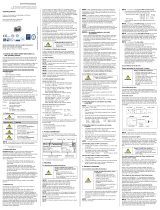 BD|SENSORS DMP 457 Operating instructions
BD|SENSORS DMP 457 Operating instructions
-
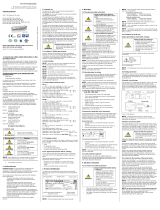 BD|SENSORS LMK 358 Operating instructions
BD|SENSORS LMK 358 Operating instructions
-
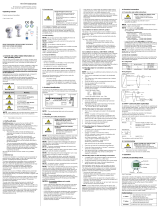 BD|SENSORS x|act ci Operating instructions
BD|SENSORS x|act ci Operating instructions
-
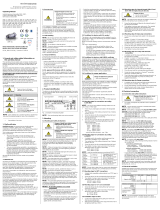 BD|SENSORS 18.605 G Operating instructions
BD|SENSORS 18.605 G Operating instructions
-
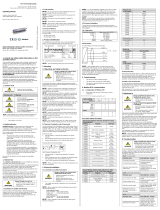 BD|SENSORS DCL 531 Operating instructions
BD|SENSORS DCL 531 Operating instructions
-
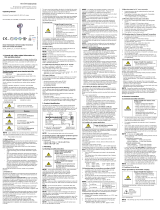 BD|SENSORS DS 400 Operating instructions
BD|SENSORS DS 400 Operating instructions
-
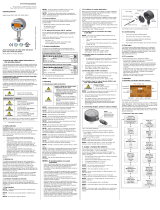 BD|SENSORS DM 01 Operating instructions
BD|SENSORS DM 01 Operating instructions
-
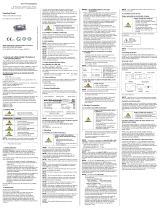 BD|SENSORS DMP 304 Operating instructions
BD|SENSORS DMP 304 Operating instructions
-
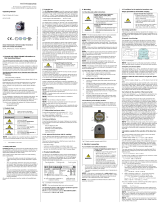 BD|SENSORS PA 430 Operating instructions
BD|SENSORS PA 430 Operating instructions
-
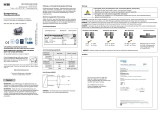 BD|SENSORS DMP 457 Operating instructions
BD|SENSORS DMP 457 Operating instructions












